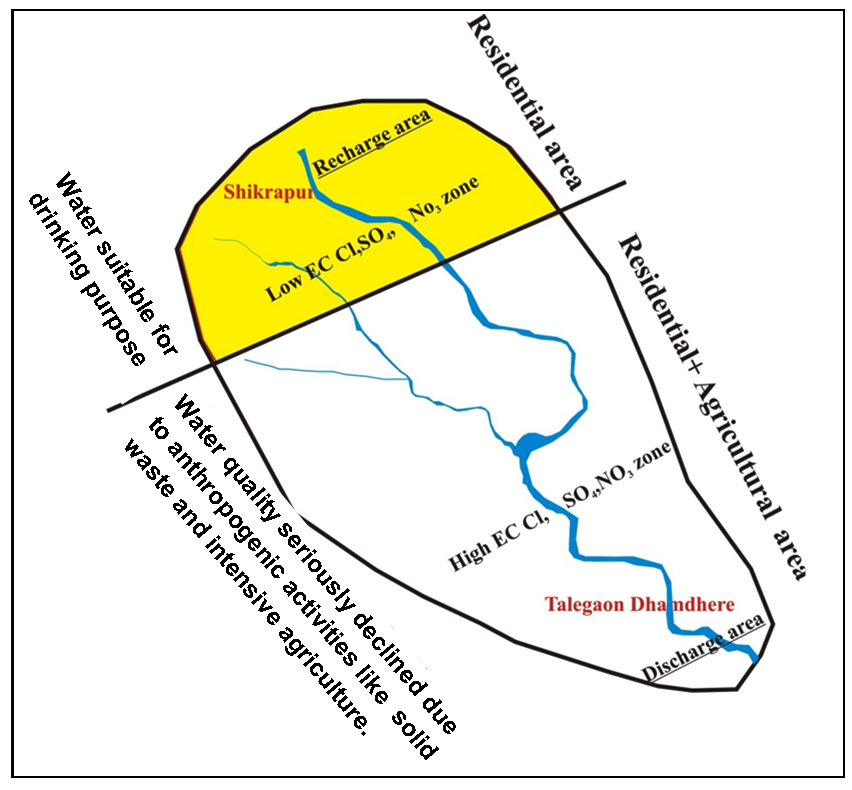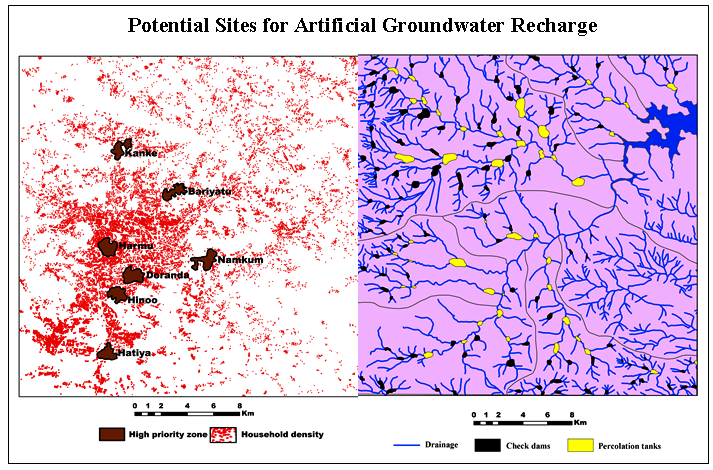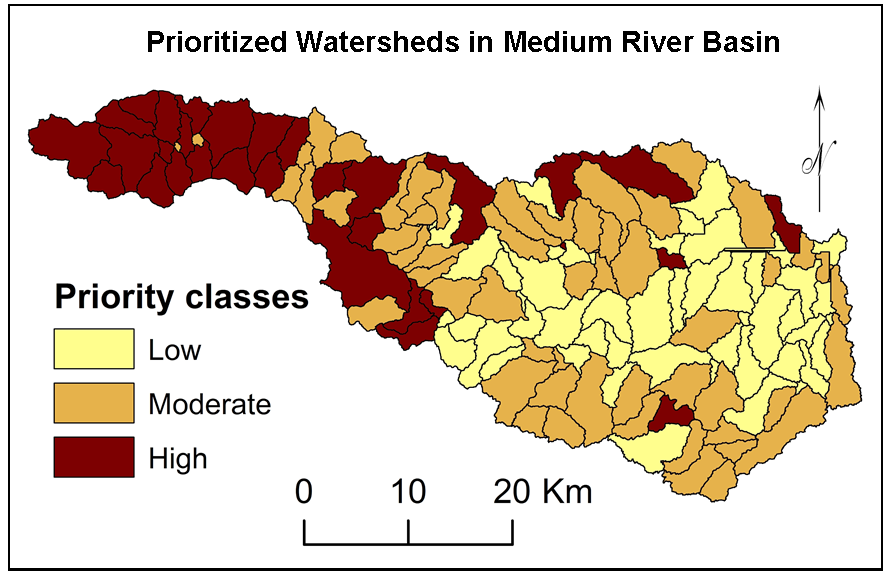Article Title :
Groundwater Quality Analysis of an Emerging Part of Suburb of Pune Metropolitan Region Maharashtra India using GIS and Remote Sensing Techniques 
Satyajit Gaikwad
,
Suryakant Gaikwad
,
Dnyaneshwar Date
,
Somnath Borhade
,
Avinash Kandekar
,
Ashwini Supekar
,
Ravindra Bhagat
,
Pravin Kambale
,
Ramdas Madale
,
Tushar Raut
,
Omkar Kadekar

2 (2018)
91-101
Pune , Remote Sensing , GIS , Metropolitan Region , Groundwater quality


Thirty (30) groundwater samples have been collected during Pre-monsoon season-2015 to analyze the groundwater quality of Shikrapur and Talegaon Dhamdhare area. Maps were prepared for major physicochemical elements in groundwater and geomorphologic aspects using GIS and Remote Sensing techniques. Trend in cations is Na>Ca>Mg>K while in anions is Cl>HCO3>NO3>SO4. The average, Na+Ca representing 61.37% of total cations denoting major supply from weathering of plagioclase feldspar while Ca+Mg values, 67.92 % of cations contributed from olivine and pyroxene. Anions like Cl, SO4 and NO3 in groundwater is contributed from anthropogenic activities. The results were compared with WHO norms and found higher values for Electrical Conductivity (EC), Calcium (Ca), Potassium (K), Magnesium (Mg), Chloride (Cl) and Nitrate (NO3). Other elements show low to optimum values indicating good quality for drinking purposes, excluding some pockets from lower reaches. Regular quality monitoring for groundwater with rainwater harvesting is suggested to improve the quality of groundwater in the region.

Abundance of the major ions in groundwater are: Na > Ca > Mg >K and Cl > HCO3> NO3> SO4.
The sources of Sulphate (SO4) and Nitrate (NO3) are anthropogenic and their concentration is increasing in downstream part of the study area.
The results show higher level of EC, Ca, Mg, K, Cl and NO3 compared to WHO norms.
Regular quality monitoring of groundwater with addition of rainwater harvesting is suggested to improve the quality of groundwater.
APHA [American Public Health Association], 1998. Standard methods for the examination of water and wastewater. Washington DC, 20th Ed.
Brindha, K., Rajesh, R., Murugan, R. and Elango, L., 2010. Natural and anthropogenic influence on the fluoride and nitrate concentration of groundwater in parts of Nalgonda district, Andhra Pradesh, India. Journal of Applied Geochemists, 12(2), 231-241.
Chaudhary, B. S., Kumar. M., Roy, A. K., and Ruhal, D. S., 1996. Applications of RS and GIS in groundwater investigations in Sohna block, Gurgaon district, Haryana, India. International Archives of Photogrammetry and Remote Sensing, 31, 18-23.
Chow, V. T., 1964. Hydrology and its development. Handbook of Applied Hydrology, 1-1.
Gaikwad, S. K. and Pawar, N. J., 2012a. Imprints of Lithological Diversity on the Chemical Composition of Groundwater from Sindhudurg District, Maharashtra. Mem Geological Society of India, 60,109-126.
Hem, J. D., 1959. Study and interpretation of the chemical characteristics of natural water (No. 1473). US Government Printing Office.
IMD [India Meteorological Department], 2015. Annual Weather Reports, Pune (India).
Mahalingam, B., Bhauso, R., Deepali, M. and Jayashree, P., 2014. Assessment of Groundwater Quality Using GIS Techniques: A Case Study of Mysore City. International Journal of Engineering and Innovative Technology (IJEIT), 117-122.
Nathanson, J., A., 1986. Basic Environmental Technology: Water Supply, Waste Disposal and Pollution Control. John Wiley.
Saraf, A. K., 1999. A report on Land use Modelling in GIS for Bankura District. DST, NRDMS.
Subbarao, K. V., 1994. Stratigraphy and structure of parts of the central Deccan basalt province: eruptive models. Volcanism, 321-332.
Tjandra, F. L., Kondhoh, A. and Mohammed, M. A., 2003. A conceptual database design for hydrology using GIS. Proceedings of Asia Pacific association of hydrology and water resources, Kyoto, 13-15.
Wagh, V. M., Panaskar, D. B., Varade, A. M., Mukate, S. V., Gaikwad, S. K., Pawar, R. S. Muley A. A. and Aamalawar, M. L., 2016. Major ion chemistry and quality assessment of the groundwater resources of Nanded tehsil, a part of southeast Deccan Volcanic Province, Maharashtra, India. Environmental Earth Sciences, 75(21), 1418.
WHO [World Health Organization], 1997. Guidelines for Drinking Water Quality Health Critieria and other Supporting Information. 2, 2nd Ed., WHO, Geneva.






